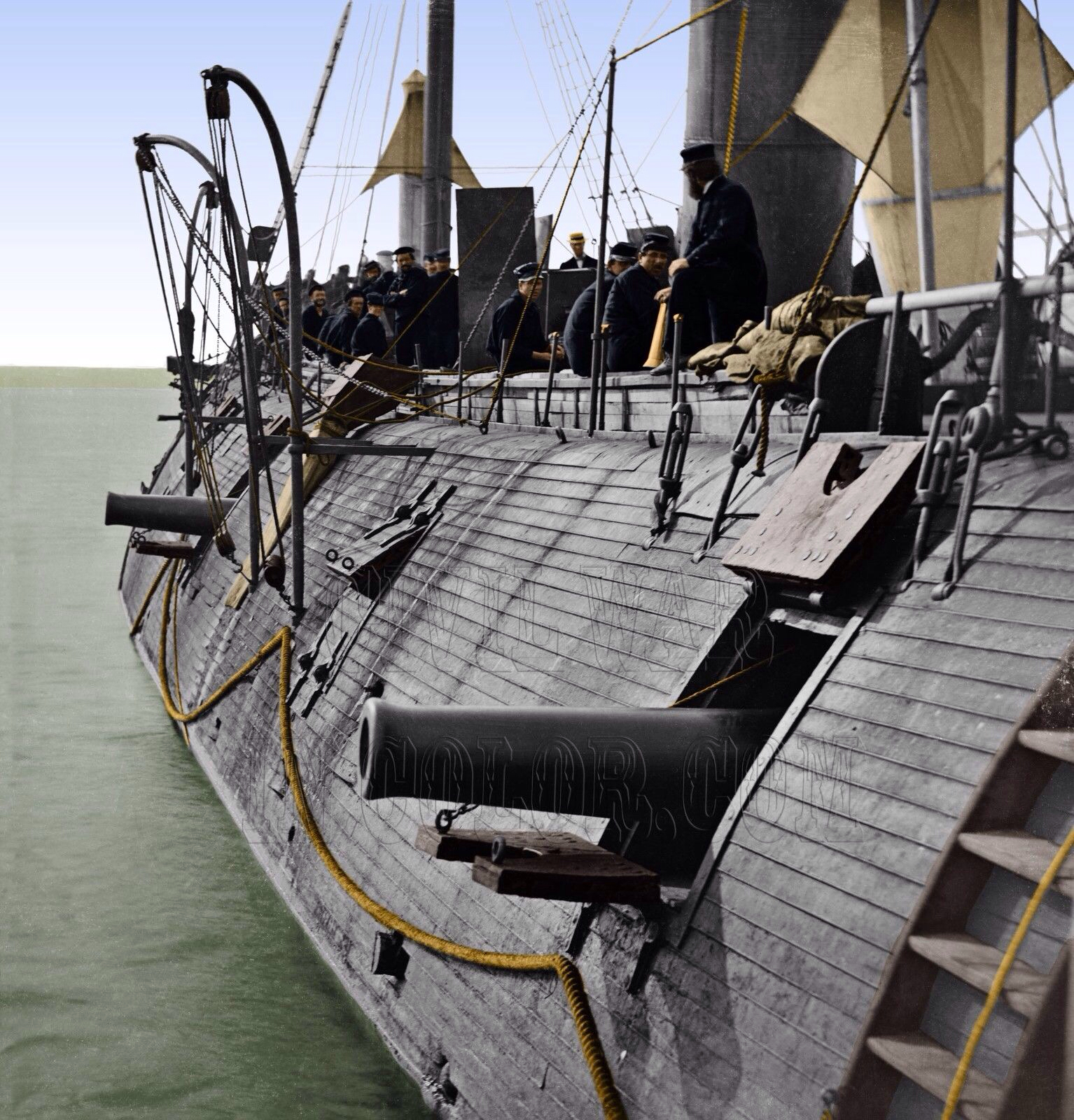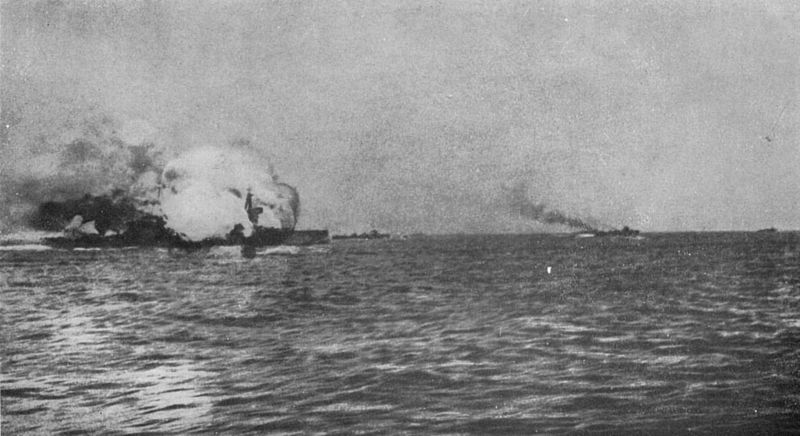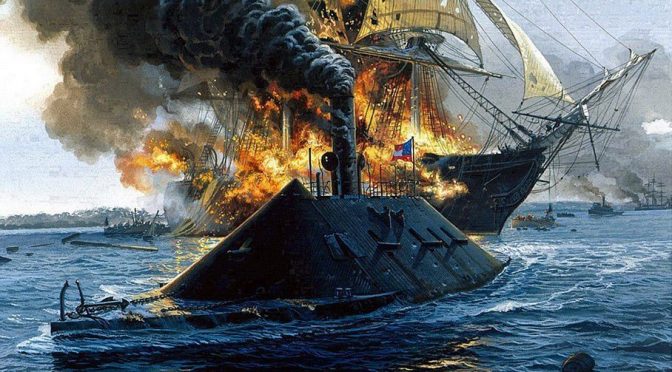Future Capital Ship Topic Week
By Steve Wills
The creation of new capital ship concepts seems to historically stem from a combination of new technology, change in strategic situation, and changes in financial resources available for warship construction and maintenance over time. The best known such case is that of the development of the aircraft carrier from simple experiment in 1914 to master of Pacific theater warfare in 1941. The carrier’s evolution from experiment to capital is fairly well known, especially from books such as historians Allan Millet and Williamson Murray’s Military Innovation in the Interwar Period, Albert Nofi’s To Train the Fleet for War, and books on aircraft carrier development by the noted naval historians Norman Polmar and Norman Friedman.
The record of success in the process of creating a new capital ship is however mixed and forced attempts without the benefit of exercises and evaluation over time are not always successful. It is also useful to study less-than-successful capital ships. Consider the cases of the American Civil War ironclad monitor-type warship and the early twentieth century battlecruiser. Varying degrees of the three factors (technology, strategy, financial change) went into their concept development and active employment. These classes were overtaken by further perturbations in the same three categories that were responsible for their initial creation and their reign as “capital ships” was brief. A study of these less-than-successful capital ship entrants is useful in predicting the emergence of the “next” capital ship.
American Civil War Monitors
The American Civil War was the genesis of several ship types, including early versions of the submarine, and the torpedo/mine laying boat. Two potential capital ship entrants include the monitor-type turreted ship and the high-speed steam cruiser. Both later filled roles as capital ships in other navies. In the case of the turreted ship, a change in strategy as dictated by the need to batter through Confederate A2/AD defenses and advances in metallurgy needed for thick armor and rifled guns made possible a new class of capital ship superior to all previous U.S. capital ship types. The steam frigate; the early industrial age descendent of the sailing ship of the line, was no match for armored warships with large solid shot or shell gun weapons. The ineffectiveness of the USS Cumberland, USS Congress, and the new steam frigate USS Minnesota against the Confederate armored ship CSS Virginia attested to the superiority of the armored ship over previous “capital” ship classes. The addition of the revolving armored turret in the original USS Monitor only enhanced armored ship capabilities. In later battles with Confederate armored ships such as CSS Atlanta, and CSS Tennessee, the turret-mounted guns on U.S. Navy monitors made short work of Confederate warships that often could not bring their armament to bear on the more agile Federal warships or lacked the armor to withstand monitor weapons. By 1865 the monitor fleet included dozens of units, including the largest Dictator-class that approached 5000 tons displacement and 350 feet in length.

A change in strategy and funding at the end of the war, however, and a failure for some aspects of armored ship technology to keep pace with political developments, ended the monitor’s brief reign as capital ship. The end of the rebel states’ coastal defenses and littoral armored ships left the monitors bereft of littoral missions. The U.S. returned to a strategy of forward-deployed squadrons on foreign stations for influence and limited combat missions. While two monitors made transoceanic voyages and were well-received by European audiences, their limited range, generally poor seakeeping and heavy coal consumption made them unfit for the new, financially austere strategic era in U.S. naval policy. On one such voyage it was discovered that while rated at 350 tons coal storage, the USS Miantonomoh actually carried only 264 tons and was towed by one of her escorts for a considerable part of her transoceanic voyage due to lack of coal.1 Nearly all were out of service by 1877. A few were briefly re-commissioned for the Spanish-American War against the threat of Spanish coastal attacks but were swiftly retired and scrapped soon after that conflict’s end. While initially successful in the limited terms of operational employment envisioned, the monitor was unable to become an enduring capital ship.
The High-Speed Steam Cruiser
The second Civil War contender for capital ship rank was the high-speed steam cruiser. While the monitor was one of the ancestors of the modern, dreadnought battleship of the early twentieth century, the Civil War steam cruiser was an early version of the armored cruiser that was also designed to prey on enemy trade in the late nineteenth and early twentieth centuries. The United States Navy was again a leader in the development of this type of ship based on its unsatisfactory experience with Confederate commerce raiders. These ships, while generally not the equivalent of Federal steam frigates, were fast on their coal burning engines and wide-ranging thanks to their sailing rigs. Over the course of the Civil War, Confederate commerce raiders, many constructed in British shipyards by Confederate-sympathizing Britons, in effect destroyed the American whaling industry at sea and inflicted severe damage on the U.S. merchant fleet as well. In the celebrated Alabama Claims arbitration case settled in 1872, the British government agreed to pay the U.S. $15.5 million dollars ($290m in 2017 dollars adjusted for inflation alone) in claims.2
This experience convinced some U.S. Navy engineers that a high-speed vessel capable of running down enemy cruisers or blockade runners would be a necessary component of the current and future U.S. Navy. To meet this mission need the navy undertook a plan to develop a steam warship fast enough to catch a blockade runner and well-armed enough to engage a Rebel cruiser. The product of this effort was the USS Wampanoag, a steam warship capable of the then- unheard of top speed of 17 knots as measured during her sea trials in 1868.3

Unfortunately, the Wampanoag was completed too late for Civil War service and despite her advanced set of capabilities was quickly removed from active service. As with the monitors, the dawn of a new, post-Civil War strategic era made a high speed ship with large coal requirements. Wampanoag burned 136 tons of coal per day at high speed and 84 percent of her total weight was taken up by propulsion equipment.4 Navy leadership advised the Secretary of the Navy that, “The Navy no longer had a strategic or tactical requirement for a vessel with such high speed and long, (coal-fired) range.”5 Another group of Navy leaders believed that the eastern seaboard’s wood shipbuilding industry was threatened by iron, steam-powered ships and that the Navy should not damage an industry on which it so relied for the maintenance of such a large part of the existing, wooden fleet. Wampanoag’s speed and coal-fired endurance records were not equaled by any foreign vessel for nearly a decade and not superseded by any U.S. ship for almost 20 years.6
The Battlecruiser
Finally, there is the case of the battlecruiser which was British Admiral Sir John Fisher’s attempt to scientifically address advancing technology, high costs in warship construction, and meet the needs of a new strategic era in a purpose-designed capital ship. Early twentieth century British naval estimates had skyrocketed over the previous decade as Britain sough to maintain a “Two Power Standard” where the Royal Navy’s capital ship fleet was the equal of the next two largest naval powers. This effort, combined with the high costs of the recent Boer War and a desire on the part of many British lawmakers to increase the size and funding of the nascent British welfare state put great pressure on Britain’s naval leadership to cut costs whilst maintaining maritime superiority.
The capital ships charged with maintaining British maritime superiority were the standard battleship (later known as the predreadnought,) that was designed to combat similar vessels in pitched battle and the armored cruiser; a high-speed capital ship designed to protect British global commerce and to hunt down and sink enemy commerce raiding ships. Both ships were expensive, but both types were seen as essential to British maritime security. Fisher’s solution was to combine both of these classes into one new capital ship capable of meeting all of the previous requirements. Advanced fire control systems then under development that allowed all of the guns of a warship to be fired in concert against a single target were also incorporated into Fisher’s new capital ship concept, albeit with less attention to detail than that which went into the guns and speed of the ship.
This vessel was the battlecruiser, the first of which (HMS Invincible) was commissioned in 1908. The battlescruisers had the size and high speed of the armored cruiser, with the heavy guns of a battleship, at the expense of additional armor that Fisher thought superfluous if the battlecruisers big guns and superior fire control allowed it to hit enemy warships decisively before return fire could inflict damage. Fisher envisioned the battlecruisers as the Royal Navy’s deployable “911 force” capable of meeting both enemy battle fleets and commerce raiders on the high seas while torpedo-armed destroyers and submarines guarded British littoral waters against enemy warships and potential invasion of the British homeland.

The battlecruiser concept, as well as Fisher’s other capital ship concept the HMS Dreadnought-type, all big gun battleship, allowed him to reduce British naval costs from 1905 through 1910. Unfortunately, technology continued to advance and the strategic situation around which the battlecruisers were designed changed. Oil propulsion, bigger guns, and the ability to build larger vessels resulted in a further combination of the dreadnought battleship and the battlecruiser into the “fast battleship” concept; the first of which was the Queen Elizabeth class of 1913. This ship could travel nearly as fast as the battlecruiser, and possessed superior armament and armor to the existing battlecruiser fleet.
The strategic situation also changed. Fisher designed the battlecruiser against the known threat of French and Russian armored cruisers built to attack the British Empire’s global trade routes. The advent of the Triple Entente alliance and the emergence of the German Empire as the Royal Navy’s new, primary enemy resulted in a different employment for the battlecruisers. Germany had no fleet of commerce raiding cruisers, and built short-range battlecruisers of its own as scouting elements for its battle fleet. While some British battlecruisers remained stationed overseas in accordance with Fisher’s original concept, most were assembled in home waters as a heavy scouting arm of the battle fleet much as were their German counterparts.
The experience of war seemed to confirm the utility of the fast battleship over the battlecruiser. Although the first two battlecruisers (HMS Invincible and HMS Inflexible) found early employment as Fisher intended; hunting down and sinking German Vice Admiral von Spee’s raiding cruiser squadron, most wartime battlecruiser operations were in support of battle fleet actions in the North Sea. German battlecruisers sacrificed gun size, operational range, and habitability for survivability and were likely more robust than most of their British counterparts. Heavy British battlecruiser losses at the Battle of Jutland were probably more to do with the failure of British gunnery officers to abide by their own standing and safety orders then any inherent vulnerability of the battlecruiser type. Nonetheless, the loss of three British battlecruisers and over 3000 men with them in spectacular magazine explosions, along with the scapegoating of the class by senior operational British commanders to cover failures in tactical doctrine did much to discourage further construction. The “last battlecruiser” HMS Hood was also sunk by a magazine explosion 20 years later by the German battleship Bismarck, an event that served only to further discredit the battlecruiser concept even though Hood was over two decades old and in need of refit and modernization.
Conclusion
What do these examples suggest about the changes in capital ship design over time? Changes in national strategy can quickly make today’s ideal warship an expensive anachronism from another era. The U.S. navy monitors, the high-speed Wampanoag, and the battlecruisers were all ideal warships as conceived in support of their respective national and naval strategies. The end of the Civil War and of the Franco-Russian surface raider threat to global British shipping made all three designs obsolete to a degree. Changes in financial support to a navy can also change capital ship definitions and bring about a search for alternatives. The post-Civil War U.S. Navy funding shortage limited the applicability of coal-hungry armored or high-speed ships, and brought a nearly two-decade return of ships with significant sail propulsion. The expensive British “Two Power Standard” building program helped to drive the search for an alternative major combatant in the form of first the Dreadnought battleship and then the battlecruiser. Post World War I financial and treaty limitations of battleships in turn helped to drive the development of the aircraft carrier. Finally, technology never stands still for long, and the monitors, the Wampanoag, and the battlecruisers were all overcome in short periods of time by ships with more advanced capabilities.
What do these changes in historical capital ships suggest about designs for the “next” primary naval platforms? The British naval architect and historian David K. Brown suggested that while the aircraft carrier was always more vulnerable to attack than was the armored battleship, the flattop was able to deliver a larger and more sustained load or ordnance on an opponent as compared to even a squadron of battleships. Anything that replaces the aircraft carrier or the nuclear submarine (both have proponents that suggest they are the current capital ship,) must at least deliver a heavier, sustained combat punch than these units. The monitors and the battlecruiser were both superseded by ships that met this criterion. The aircraft carrier, by contrast, has been upgradable over time with new aircraft making it sustainable for a long period. Continued technological advances demand that any new platform be upgradable over time. The Wampanoag’s machinery was advanced, but contained wooden gears that wore down and needed a replacement over the course of one voyage. Subsequent machinery plants and other systems were more robust. The electromagnetic rail gun may be the next weapon of the next capital ship, but its barrel life must improve beyond a few hundred shots in order to be operational and tactically viable.
There is a lively debate as to what the next capital ship or system will be, but it will still likely be affected by the same financial, technological, and strategic influences that drove past capital ship changes. Any new capital ship must be capable of greater sustained ordnance delivery over time than its predecessor. Given the changes of the last decade in terms of a new era of strategic, great power competition, the rapid advance of many technologies, and financial shortfalls for many nations in terms of naval spending, the question of the next capital ship remains a healthy one open to continued debate.
Steven Wills is a retired surface warfare officer with a PhD in Military History from Ohio University.
These views are presented in a personal capacity
References
1. Howard J. Fuller, ““A portentous spectacle”: The Monitor U.S.S. Miantonomoh Visits England, “ The International Journal of Naval History, Volume 4, No 3, December 2005, p. 8.
2. http://legal.un.org/riaa/cases/vol_XXIX/125-134.pdf
4. Wegner, D.M.; Ratliff, C.D. (September 1998). “USS Wampanoag, 1868: Isherwood, Taylor, and the Search for Speed”. Naval Engineers Journal, pp. 19–31.
6. David K. Brown, From Warrior to Dreadnought, Warship Development from 1860 to 1905, Barnsley, UK, Seaforth Publishing, 1997, p. 19.
Featured Image: “Congress Burning” by Tom Freeman.

